At my last flea market, one of the other vendors (a lovely lady selling the most fabulous knitwear) asked me how I get my Pyrex so clean and shiny. She’d had some issues keeping hers looking its best, and was wondering if I had any tips or tricks. I kind of brushed it off with an, “Oh, I just wash it!” But later I thought about it and realized that I really do have a process that I use. I thought I would share it here so that I can help other collectors.
For the purpose of demonstration, I’ll use the two pieces that came into my possession recently. The top one is a JAJ Pyrex casserole in the Market Garden pattern from 1971. (James A. Jobling’s company produced Pyrex in England from 1921 through 1973, when the patent rights reverted to Corning; after this point, the “Pyrex England” backstamp was used.) The bottom is a rectangular casserole from 1956 by the American Pyrex division in the Snowflake pattern, which is the very first pattern that was ever screen printed onto Pyrex. Given the age and condition of these pieces, I really want to keep the designs intact. Most importantly, when I got them there were no chips or nicks, which is something even the best cleaning can’t fix!
To be honest, these dishes aren’t in the worst condition of the ones that have come into my collection; some good examples of how bad it can get are in my old Cleaning Glass post. As is quite common, the inside of the casseroles were in pretty good shape, since people are most picky about keeping the parts that touch their food in the best shape, but the bottoms were worse off. But do not despair if you see this brown residue on a dish that you want, since it will totally come off with a bit of work!
One of the most important things I can say about cleaning old coloured Pyrex, whether it be solid-colour or screen-printed, is not to put it in the dishwasher. They won’t warp or chip in there — after all, they’re meant for the oven and even the oldest are safe for the microwave if there’s no metallic trim. However, the harsh chemicals and high heat of the dishwasher can fade or even completely erase the beautiful colours over time, so I really would recommend avoiding it! Of course, modern Pyrex and Corningware are dishwasher-safe, so if you’re not sure of the age of a piece, look for the stamp on the bottom that labels it as such.
On the Market Garden piece, the worse part was where food debris had collected in the edge around the rim. This is usually really hard to get out, but I have a technique for that which works for most dishes.
When cleaning coloured Pyrex, one of the things you want to avoid the most is heavy-duty scrubbing. So, no highly abrasive cleaning powders or scouring pads! (Although I’m quite enamoured of Lee Valley’s stainless-steel chain mail scrubber, which is great for cast iron, it would utterly ruin a Pyrex dish.) So your best bet is to fill up a sink with hot water and a generous helping of dish soap, and then let that sit overnight. Yes, the same technique for tackling the roasting pan from the Christmas turkey works with Pyrex, but why wouldn’t it?
When it comes time to scrub the dishes in the soapy water, I like to use the double-sided cleaning sponges with the green scrubber. I find that they’re generally abrasive enough to get rid of stains, yet not abrasive enough to remove designs (unless you scrub for a really long time — always be careful!).
And here you can see my secret weapon: bamboo skewers. They’re perfect for getting into tiny little areas that accumulate grime, but because they’re so breakable it’s really difficult to scratch the finish with them. The wide end of the skewer can even be used to concentrate your effort on areas with a thick layer of baked-on grease; I used them to great effect on my enameled cast-iron pan. As a bonus, they’re not strong enough to go through the enamel on cast-iron either (on which you also don’t want to use anything too abrasive lest you damage the finish).
I was lucky this time in that the Snowflake dish came completely clean with this treatment, even though it looked like it was in the worst shape. So I only had to do the next step on the Market Garden piece: a paste of baking soda and lemon or lime juice. The juice is acidic and the baking soda is slightly abrasive, which makes for a perfect cleaning combination. I left the past on overnight to dry, then added more lemon juice to scrub off the stains the next morning. Then, for a super-shiny finish, I gave it one more good wash in dish soap and water.
Sometimes, with dishes in really rough shape, you have to repeat these steps a few times. One other thing you can try, although only as a last resort, is a sink full of hot water and a single dishwasher detergent packet, left to sit overnight. I only do this when the dishes have resisted every other cleaning method, because the detergent is really harsh and concentrated. But I much prefer using one of the packets instead of giving up altogether! However, this time I didn’t have to resort to such drastic measures.
So here are my cleaning results:
Pristine bottom surfaces.
Edges like new.
And interiors from which you’d be happy to serve any guest.
So next time you see an old Pyrex piece that’s a bit worse for wear, don’t automatically discard it because of the amount of work that’d be involved bringing it up to snuff. It may take a couple of rounds of soaking, but it can look like new again without all that much elbow grease!

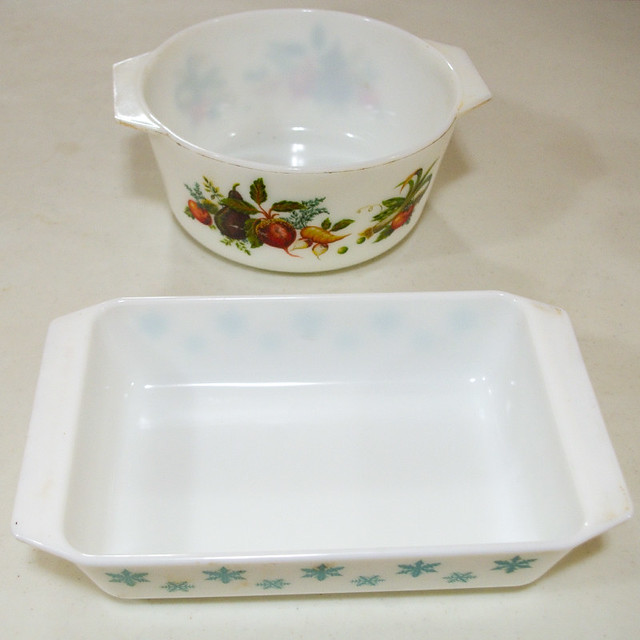
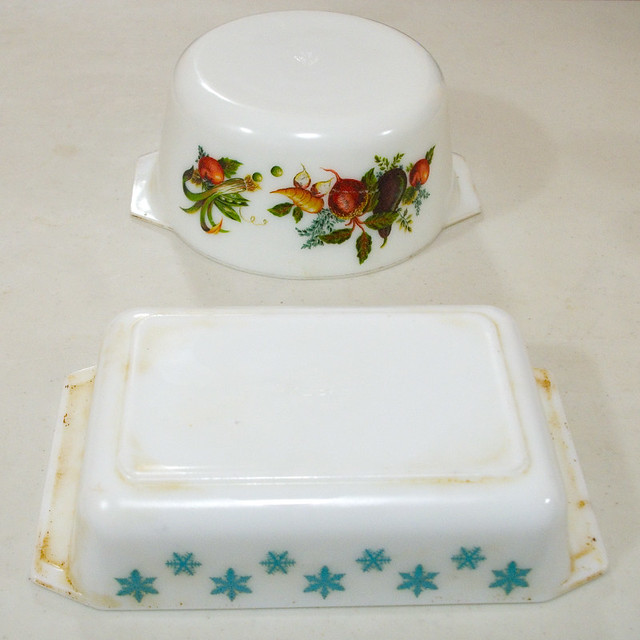
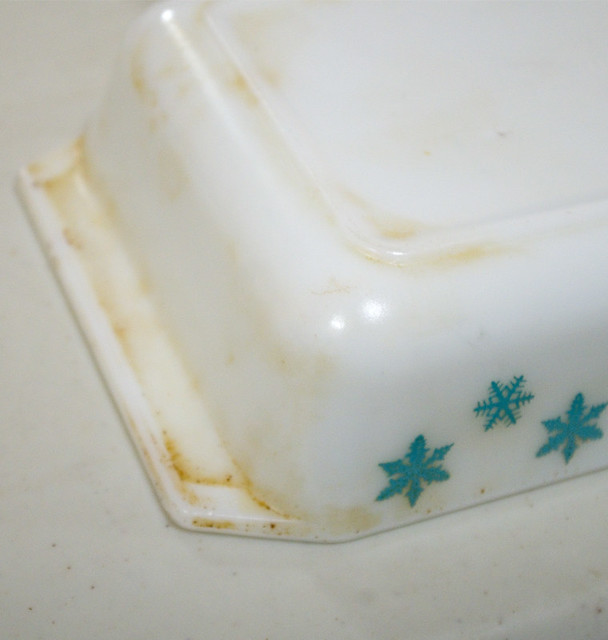


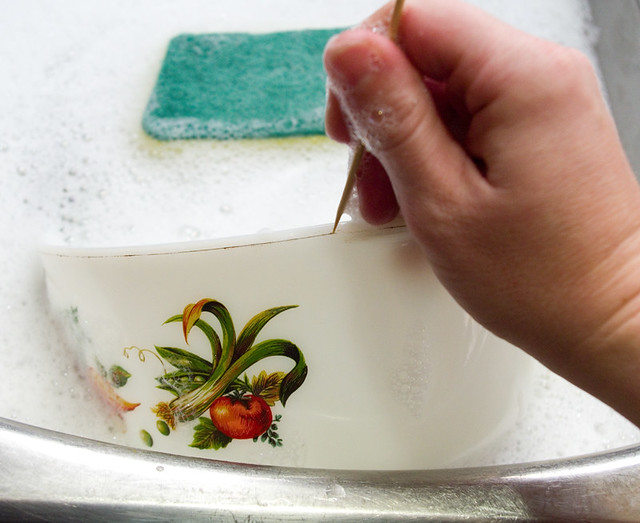
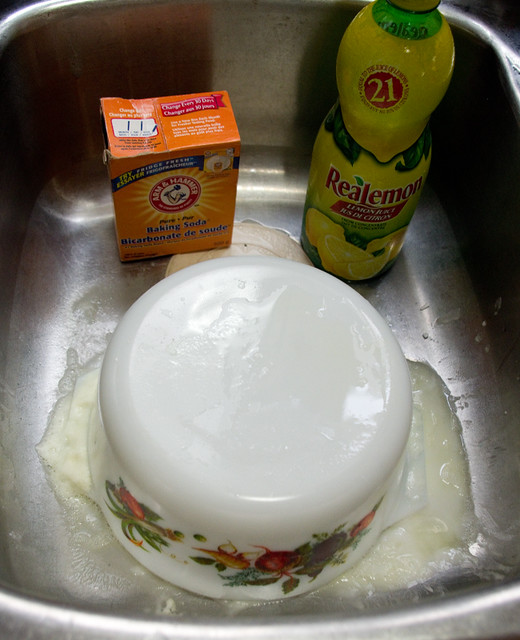
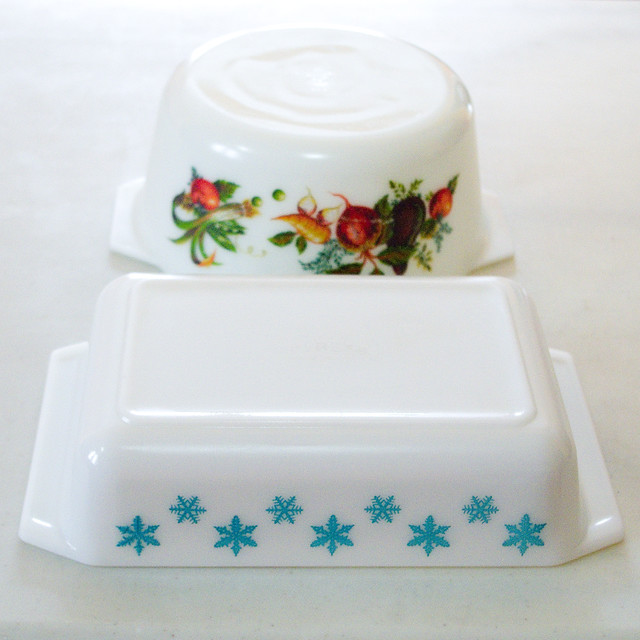
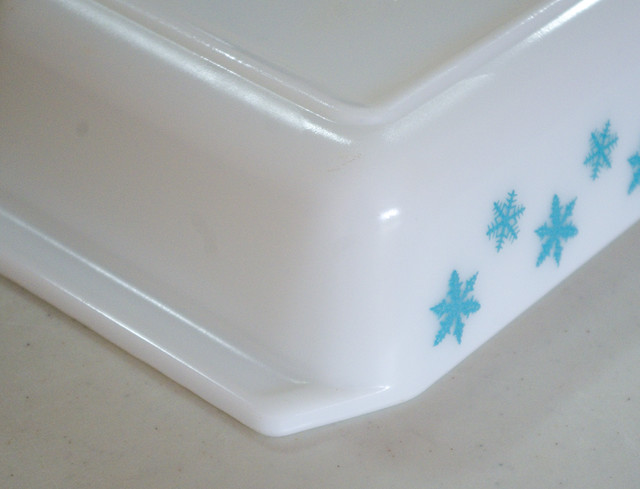


Thanks for the tips.
LikeLike